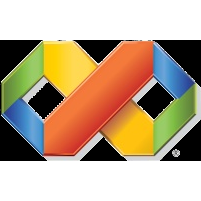Engineering tools and technologies change with time. Some come and go and some just get upgraded. The following are a few of the tools and technologies that I use (or have used) on a regular basis.
I have worked with DOORS for a number of years for requirements capture and requirements management. DOORS is a fantastic toolset (albeit not a very user friendly interface at times!). DOORS is great not only for requirements capture and management but can be used for document creation and editing. I have used it for development of user guides and installation guides for multiple instantiations of differing versions of applications. There are some great capabilities in DOORS when multiple projects are using it as a core repository for requirements management using DXL scripting.
System Architect
I have worked with Telelogic (now owned by IBM) System Architect extensively in a number of ways. The most effective usage I have had from System Architect is using it with a MODAF UserProps (or a slightly customised version for our purposes). System Architect is an extremely powerful architecting tool. Often slated for not being very user friendly (which in some ways is true) its ability to be completely customised to your requirements makes it an ideal platform to be used for large scale applications where the budget exists to customize the toolset for your purposes.
I have used Enterprise Architect (from Sparx System) for working in UML to describe system designs on a number of occasions. Enterprise Architect is an extremely powerful modelling tool, perhaps best suited to software architecting (as a Computer Aided Software Engineering (CASE) tool). Certainly it provides better rendered illustrations (read UML diagrams) that System Architect and some of the analysis tools are better off the bat, but the depth of reporting through DXL within System Architect is extremely powerful.
I’ve used VB (and VBA) for over 10 years now for a variety of reasons. With a great deal of experience under my belt, I would put myself into the advanced category, having spent time working with VB from DAO, RDO, ADO as well as VB-MySQL (using ODBC as well as VB-MySQL Direct drivers).
I’ve worked with the Eclipse IDE for the development of Java programs (mainly through developing an RCP application) in a limited capability. This has not been required yet for any of the companies I have worked for but has provided an excellent grounding in better understanding OOP techniques . Eclipse is a very flexible platform (if a little complex at first) but it can be used to both develop applications as well as as the basis of the platform you deploy (I have used it in this context professionally).
The Ministry of Defence Architecture Framework (MODAF) is a very versatile framework for developing and integrating systems. Comprised of the “MODAF Meta Model” (M3), a set of Views and their child ViewPoints, it provides a universally interpretable description of the systems and operations in question. It provides the ability to capture work across all Defence Lines of Development (DLODs) as well as offering detailed systems views for capturing structural, behavioural and state descriptions. I have used MODAF for a number of years, for a number of different purposes, working primarily in the Operational and Systems views (although have touched on all the other views (including the Human View extension)).
The Unified Modelling Language (UML) is a language developed by the Object Modelling Group to describe software intensive systems. It can be manhandled into use for just about anything but then there are plenty of other good languages out there is you need a language for another reason! UML (currently at 2.0) is a rich language that can be used by CASE tools for actively generating code, in effect providing a “visual programming language”….however, I have not tried to use it in this capacity! Like most systems Engineers, I have used UML as a tool, where appropriate, to communicate ideas and decisions rather than using UML for everything on a project.



